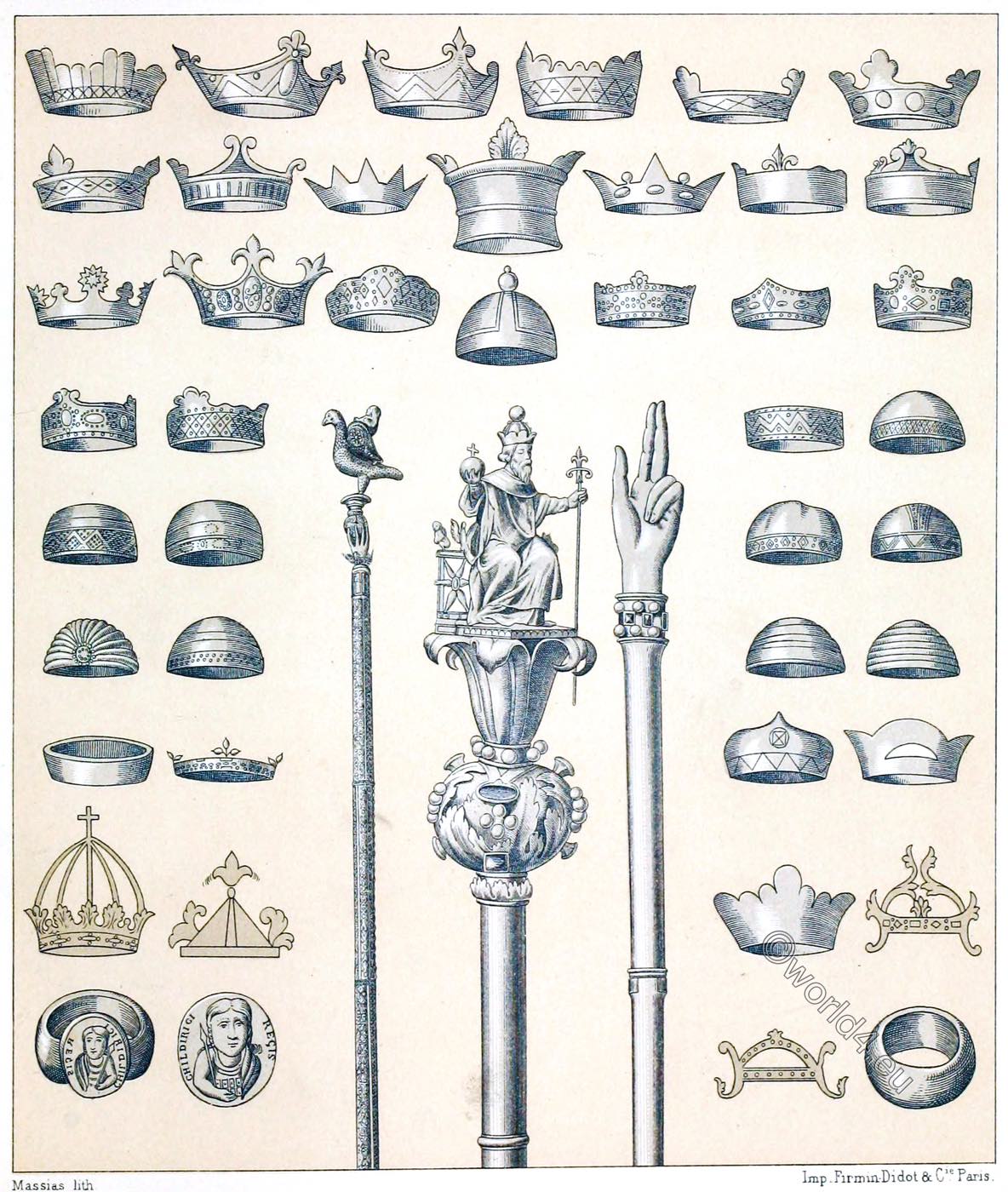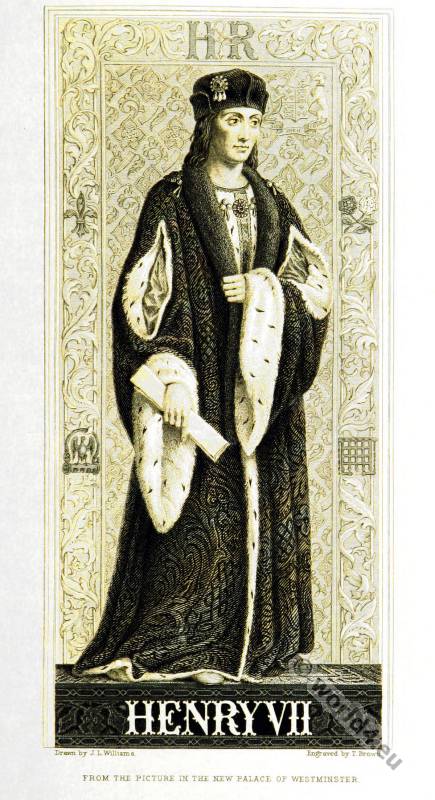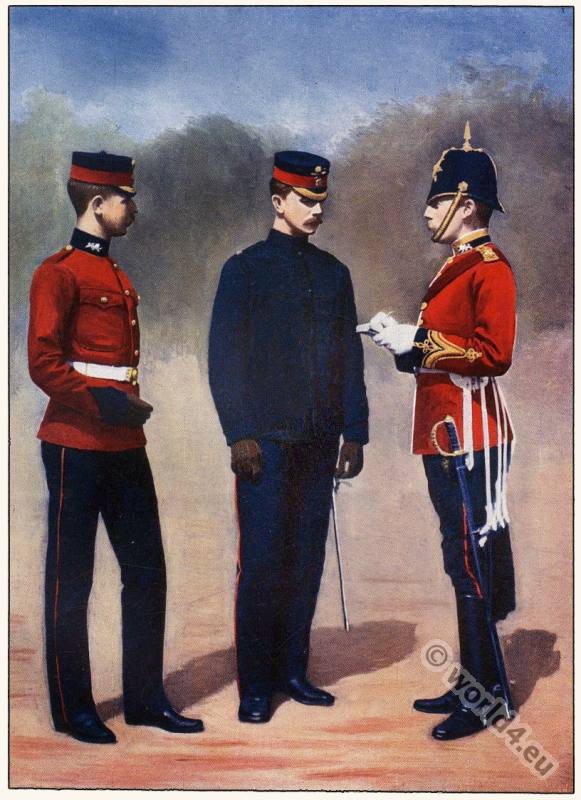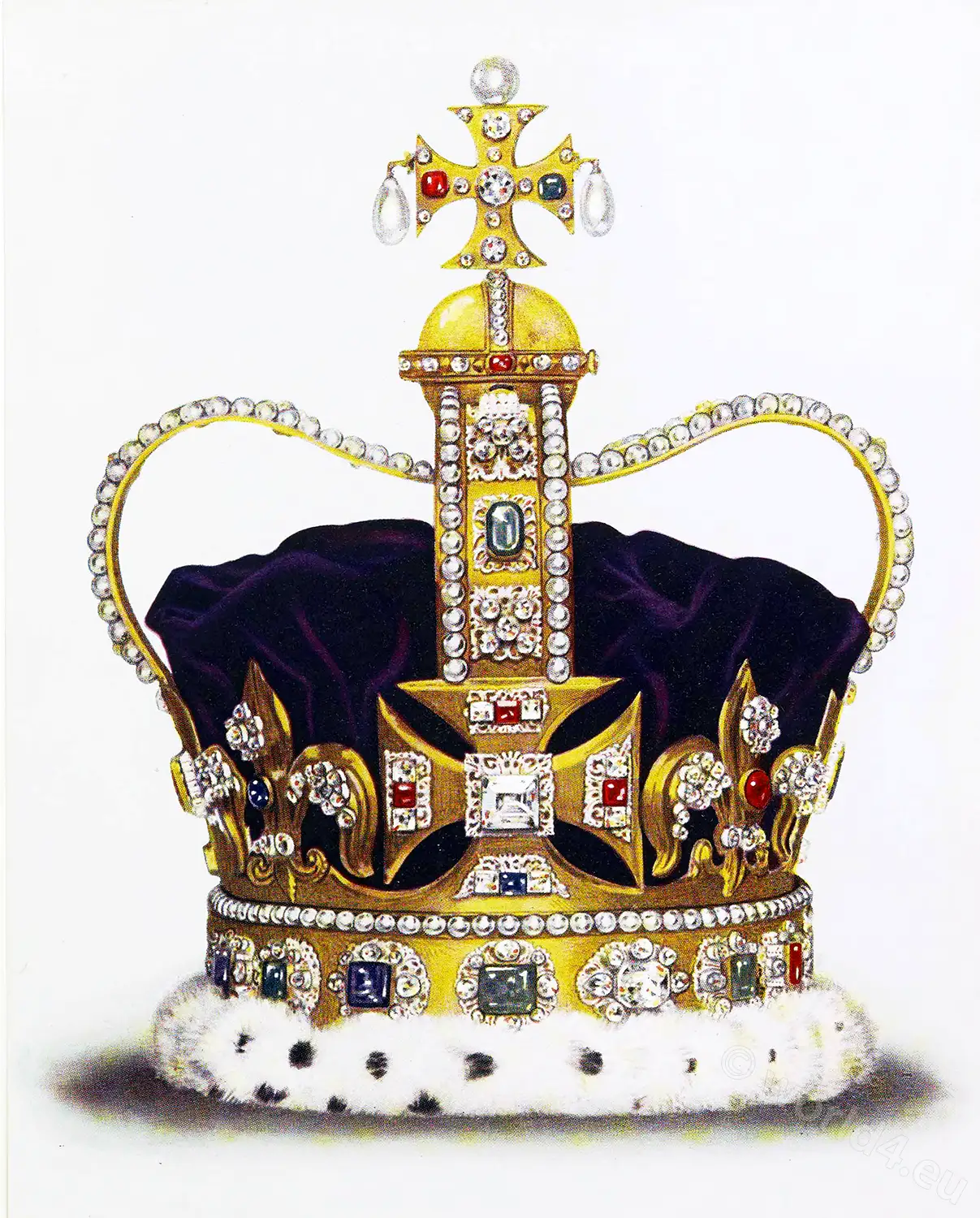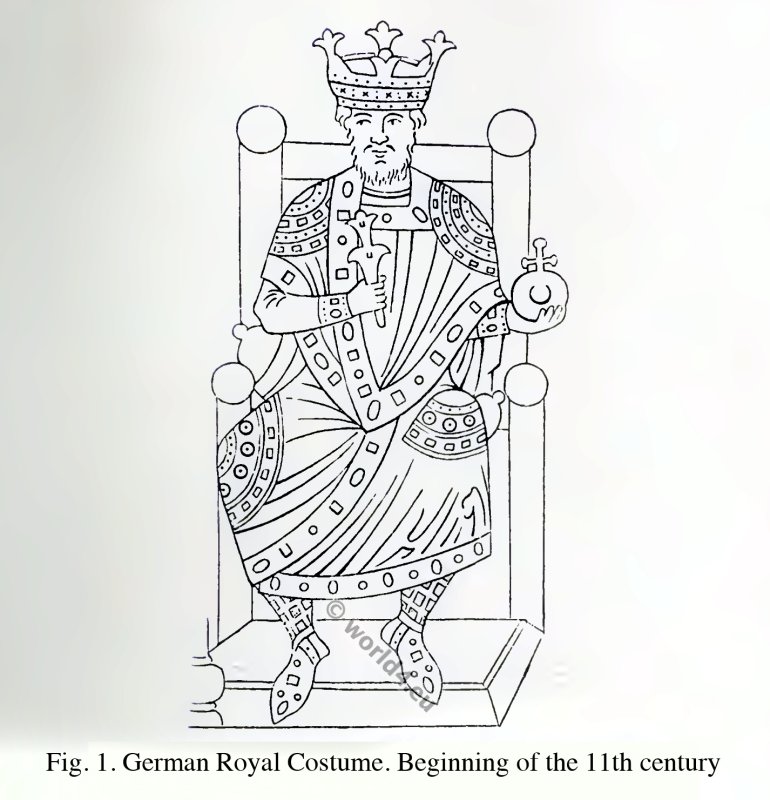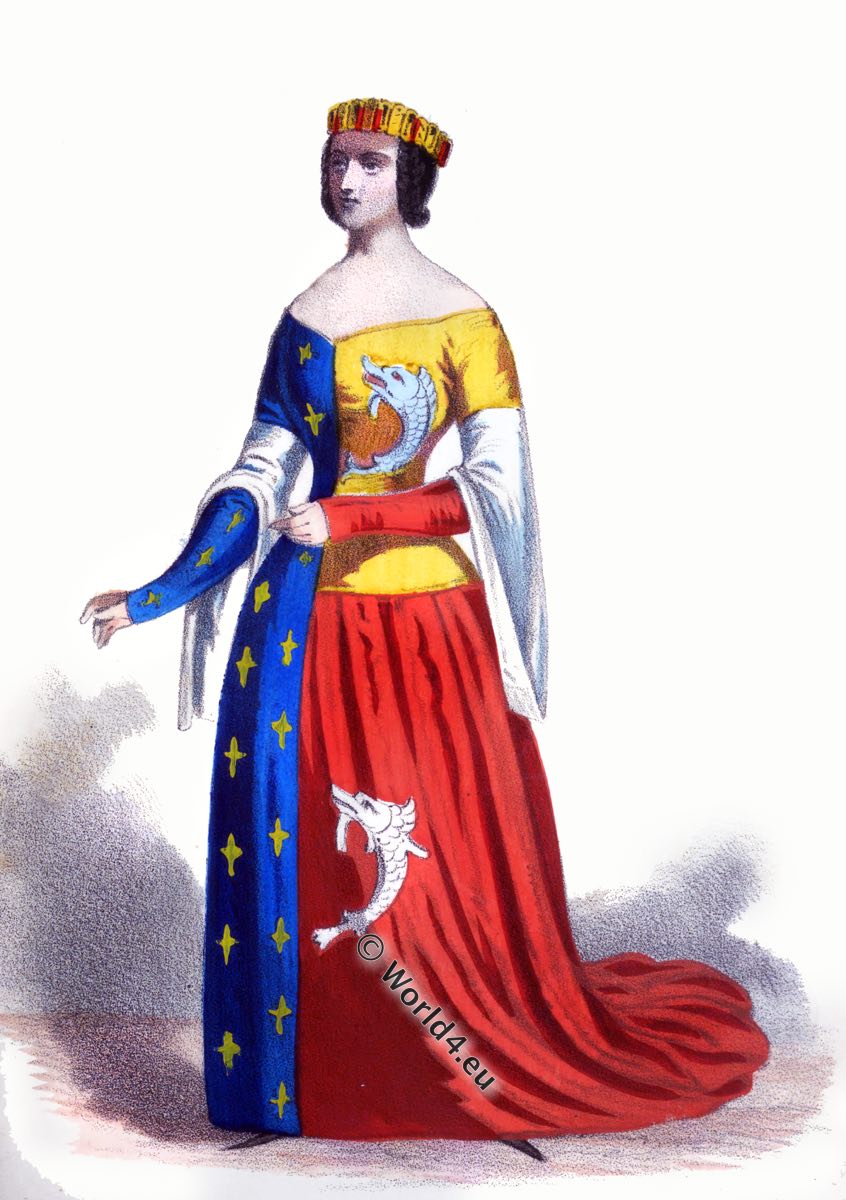
THE ROYAL HOUSE OF NORMANDY.
WILLIAM I.
Surnamed the Conqueror.
14 OCTOBER, 1066.
OF the armorial bearings of the Monarchs of this House, if any were used by them, we are left totally without contemporary evidences. Their seals present to us on one side their equestrian figures armed, and bearing shields, hut the interior side being alone visible, we are unable to ascertain whether they were charged with any heraldic emblem or not.
In the Bayeux tapestry*, said to have been executed by the Queen of William the First, assisted by the ladies of her court, the shields borne by the warriors are covered chiefly by various patterns of mosaic or diaper, not bearing any resemblance to heraldic figures. On the seal of King Stephen, one half of the exterior side of his shield is visible, and appears to have been totally plain.
The arms here given (PI. i. fig. 1) for William I. and his Queen Matilda, the daughter of Baldwin V. Earl of Flanders, are taken from the cornice of Queen Elizabeth’s monument, in the north aisle of Henry the Seventh’s chapel, at Westminster; yet it must observed, that the union of arms by impalement, was not practised for a very considerable time after the period to which these refer. The arms of William ** are those which have been for ages attributed to him and to the two succeeding monarchs.
*) Vide Montfaucon, “Monum. de la Monarch. Française,” tom. ii. p. I.
**) In a splendid illuminated genealogy of Queen Elizabeth, deduced from Rollo Duke of Normandy, remaining in his Majesty’s library at Buckingham house, King William is represented bearing on his left-arm a red shield, eharged with two golden lions, and holding in his right-hand a banner, barry of ten; Argent and Azure; he treads on the shield of Harold. A MS. in the” Harleian Library,” N° 1073, fol. 6, tells us, that the eharge on the banner was borne as arms by Fulbert de Faloys, his maternal grandfather, and that William himself did bear the same, before the Conquest. MS. Harl. 4205, fol. 1, and Bossewell’s “Workes of Armorie,” fol. 31 B, give them as barry of six: the standard, represented in the right-hand of the equestrian figure on his great seal, is eertaiuly divided into horizontal stripes.
Pope Alexander the Second sent a consecrated white banner to William, previous to his expedition against Harold.- Will. Malmsb.
Those of his Queen do not rest on stronger evidence. Oliv. Uredius, in his “Collections respecting the Seals of the Earls of Flanders,” pp. 11, 12, is of opinion, that they did not bear any arms at so early a period; and that all the proof for those generally attributed to them, is derived from evidences much posterior to the time required.
WILLIAM II.
Surnamed Rufus
9 September, 1087.
THE arms ascribed to this monarch (PI. i. fig. 2) are the same as to his father.
HENRY I.
Surnamed Beauclerc.
1 AUGUST, 1100.
THE arms here given (PI. i. fig. 3) are the same as to the preceding kings; which, being impaled with those of his Queen, Matilda, the daughter of Malcolm III. King of Scotland, have been taken from the cornice of Queen Elizabeth’s monument.
For the arms of his second Queen, Alice, the daughter of Godfrey I. Duke of Brabant, can only be presented the coat, which is invariably assigned to her family, but the authority for which is now only traditional.
STEPHEN.
Surnamed of Blois.
2 DECEMBER, 1135.
To this King also, have been attributed the two lions or leopards borne by his predecessors; but Nicholas Upton, in his treatise “De Militari Officio,” b. iv. p. 129, thus describes the arms, which he tells us were borne by him: “Scutum rubium, in quo habuit trium leonum peditantium corpora, usque ad collum, cum corporibus humanis superius, ad modum signi Sagitarii, de auro.” From the marginal plate to his work (printed in 1654), the annexed representation (Pl. i. fig. 5) has been copied. Upton tells us, that this bearing was assumed by Stephen, in allusion to the zodiacal position of the sun, at the time he ascended the throne *.
The attributive arms of his Queen, Matilda, the daughter and heir of Eustace Count of Bologne, are given in Pl. i. fig. 6. It is only certain, that her family did bear them a short time subsequently **.
The head-piece to this division (p. 1) will be found to be composed from the insignia on the great seals of the before-mentioned kings.
*) Guillim, p. 220, edit. 1660, says, that “Ostrich feathers in plume were some time the device of King Stephen, with this motto, ‘Vi nulla invertitur ordo,’- ‘No force alters their fashion.'”
**) Olivo Ured. p.29.
Source: Regal heraldry; the armorial insignia of the Kings and Queens of England, from coeval authorities by Thomas Willement, Heraldic Artist to his Majesty King George The Fourth. Printed by W. Wilson, 4, Greville-Street, Hatton-Garden. Published by the Author, 25, Green Street, Grosvenor Square. London 1821.
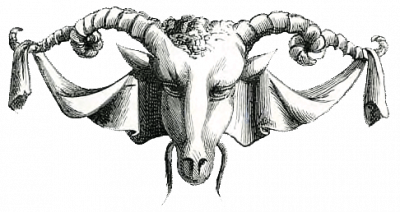
Related
Discover more from World4 Costume Culture History
Subscribe to get the latest posts sent to your email.

